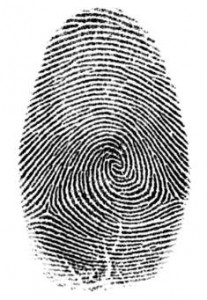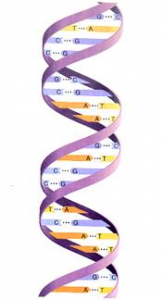 I am a bit of a forensics buff. Not that I perform the tests that forensic scientists do, I just like watching shows that tell about those tests, and then I try to guess who did the crime. I don’t suppose that I would be the kind of person an innocent man would want to be performing the tests that were going to keep him out…or land him in prison. For an innocent man or woman, being accused of that crime is the beginning of a nightmare. No one wants to believe him, because everybody claims to be innocent…right? Unfortunately, many people accused of crimes are innocent, and in days gone by…before things like DNA matching and fingerprints, the only evidence available was eye witnesses and circumstantial evidence, both of which were far from infallible. Eye witnesses are notoriously unreliable, and it isn’t really their fault, because they were, after all, shook up!!
I am a bit of a forensics buff. Not that I perform the tests that forensic scientists do, I just like watching shows that tell about those tests, and then I try to guess who did the crime. I don’t suppose that I would be the kind of person an innocent man would want to be performing the tests that were going to keep him out…or land him in prison. For an innocent man or woman, being accused of that crime is the beginning of a nightmare. No one wants to believe him, because everybody claims to be innocent…right? Unfortunately, many people accused of crimes are innocent, and in days gone by…before things like DNA matching and fingerprints, the only evidence available was eye witnesses and circumstantial evidence, both of which were far from infallible. Eye witnesses are notoriously unreliable, and it isn’t really their fault, because they were, after all, shook up!!
After spending years in prison, at least fifty people have been exonerated since the dawning of DNA testing. it’s probably hard to say how many have been proven innocent based of fingerprint evidence. And I have to wonder how many have died innocently in prison because they were convicted long before the tests that might have set them free. Fingerprint identification has been used for over a hundred years now, and at one time was considered the best way to prove innocence or guilt. Of course, they aren’t infallible in that respect, because while no two fingerprints have been found to be alike in all those years, it is entirely possible for someone to be somewhere, but not at the time of a crime. If all you have to go on is fingerprints, that can be incriminating…even for an innocent person. Unfortunately, it was not foolproof.

In April of 1953, Watson and Crick published a model of the DNA helix in a one page letter to ‘Nature’. It began with the now famous under statement: “We wish to suggest a structure for the salt of Deoxyribose Nucleic Acid (D.N.A.). This structure has novel features which are of considerable biological interest.” It would take until 1984 before Alec Jefferies and his colleagues would develop genetic fingerprinting, which is using DNA to identify individuals. Finally in 1987 in the United Kingdom, forensic investigators used DNA testing to help solve the ‘Black Pad’ murders and to identify the killer as Colin Pitchfork, who later confessed to the crimes. This was the first case in which DNA evidence is used to determine the identity of a murderer and it also involved a mass screen. It also marks the first case in which a prime suspect was exonerated due to DNA evidence. In 1994 DNA evidence was used in Ireland, and by the 1995 trial of OJ Simpson, it was finally used in America. It seems very strange to me to think that DNA evidence has only been used in the United States for twenty years. To me, it seems like it has been around for a really long time, but that really isn’t so. Nevertheless, on June 28, 1993 DNA evidence cleared Kirk Bloodsworth, an ex-Marine, of a murder for which he had been convicted on this day, July 24, 1984. Sadly, he served nine years before his case was reviewed and he was finally set free.


Leave a Reply